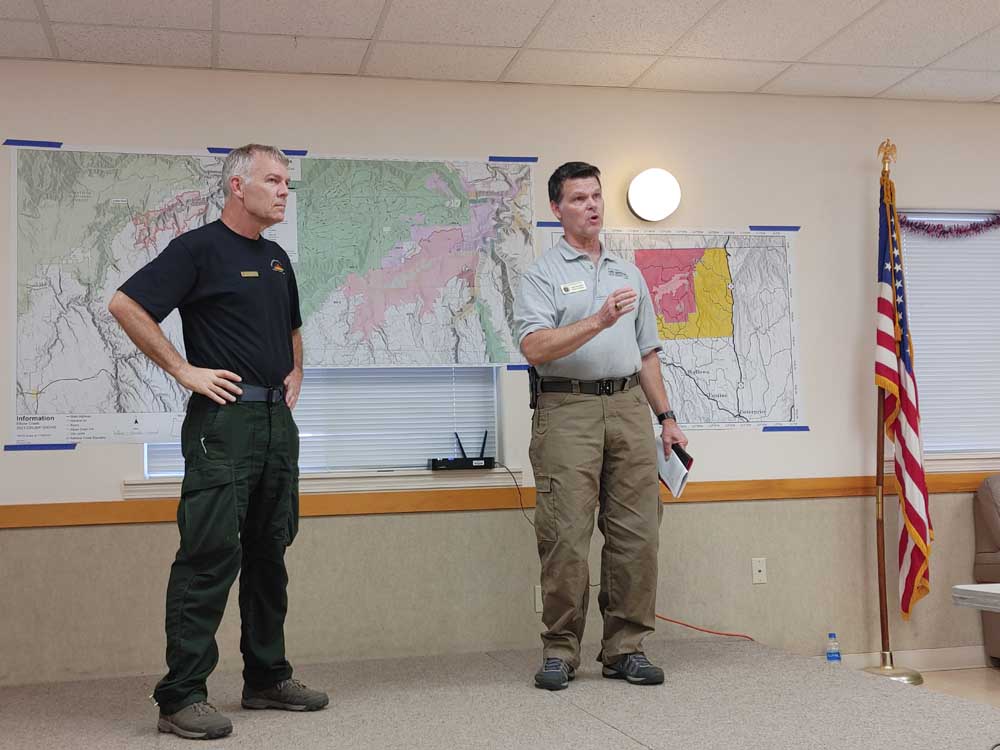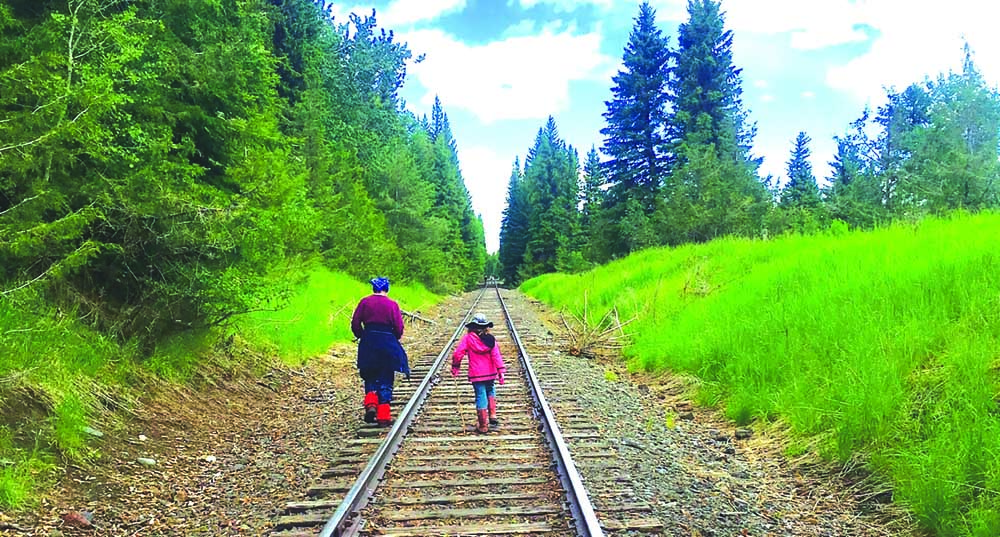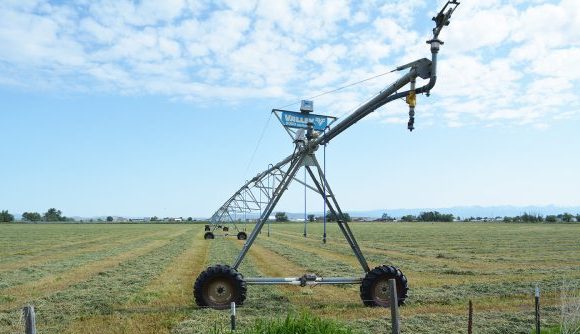Incident Commander Smith talks fire strategy
Published 2:00 pm Thursday, July 22, 2021

- Incident Commander Link Smith, left, and Deputy IC Les Hallman, speak in Wallowa on Tuesday, July 20, 2021, during a community meeting on the Elbow Creek Fire.
WALLOWA — Link Smith has previously fought fire in every portion of Oregon except for the northeastern corner.
He’s now coordinating the attack on the Elbow Creek Fire burning southwest of Troy.
Smith is the incident commander for the Type 1 Oregon Department of Forestry Incident Management Team 3 that has been on the scene trying to quench the Elbow Creek Fire since Sunday morning, July 18.
Smith, the district forester for the Western Land District west of Eugene, is a veteran firefighter. He said during an interview with the Chieftain on July 20 that this is his 37th year fighting fire, his 29th with the ODF and his eighth as an incident commander.
He’s faced some of the state’s biggest blazes, as well. Smith was the IC on the Holiday Farm Fire, which burned more than 173,000 acres east of Eugene and Springfield in 2020.
The Elbow Creek Fire, while just over one-eighth the size of the Holiday Farm Fire at 22,790 acres as of Tuesday, presents its own challenges. While the Holiday Farm Fire was affected heavily by wind, it’s been the terrain, he said, that has been difficult at Elbow Creek.
“Every fire is different just based on the environment and weather conditions,” he said. “You look at Holiday Farm last year, it was wind-driven, a very significant wind event, which is challenging in itself because of the rate of spread, but you knew where it was going. The wind’s blowing from one direction and pushing on the fire. Here, what’s challenging about it is it’s fuel-driven and (you face) smoke and drainages. You don’t know which way the wind is going to blow up these drainages.”
He said that the deep, steep drainages and canyons in the area where the fire is burning makes trying to attack it difficult.
“The Holiday Farm Fire, you could reach everywhere,” he said. “These canyons are so deep, it’s really challenging to get people down into them.”
The canyons’ depth and steepness have even limited one of the tactics Smith likes to employ — fighting fire at night.
“It’s a really good time to catch a fire, but it’s too steep and too dangerous to put firefighters in a draw at nighttime here, so that takes away one of our typical strategies simply because of geography,” he said.
In explaining firefighting and tactics, he said there is a benefit to having air support, but manpower on the ground is what matters.
“People like to think ‘just bring in more helicopters or air tankers.’ They slow the fire, (but) you have to have boots on the ground to really put it out,” he said. “Even if it rains, it buys you an opportunity. I like to tell people we take advantage of opportunities. If we can get an air tanker in there and slow it down, maybe we can chip away at a line. It’s all about containment, and in this country it’s hard to contain a fire.”
A contained portion of a fire, he said, is where a border containment line is holding to the point the crew feels confident they could leave that portion and it would no longer spread.
“We’re estimating if we walked away from it, we’re estimating 15% of that line we have in, it wouldn’t expand,” he said when explaining the containment at the time, which was 15%. “The rest of the fire could. “As we continue to strengthen those lines, the containment goes up. Before we leave here it will be at 100%.”
The terrain, he said, dictates what strategy is put in place, but he added the team will “chisel away” putting a border around the fire until it’s handled.
“What’s your first priority? Maybe it’s a little section of line, but you have to button that up. We have people throughout the fire, we’ll really put an emphasis on one of those fronts, catch that one, and (then) we’ll put emphasis on another one, and just chisel away at it.”
The blaze Smith worked on last year was the largest he had ever been on, yet he’s stunned by the current fire situation.
“It’s crazy the size of fires right now. Never seen anything like it,” he said. “It’s more fires, and they’re all big fires.”









